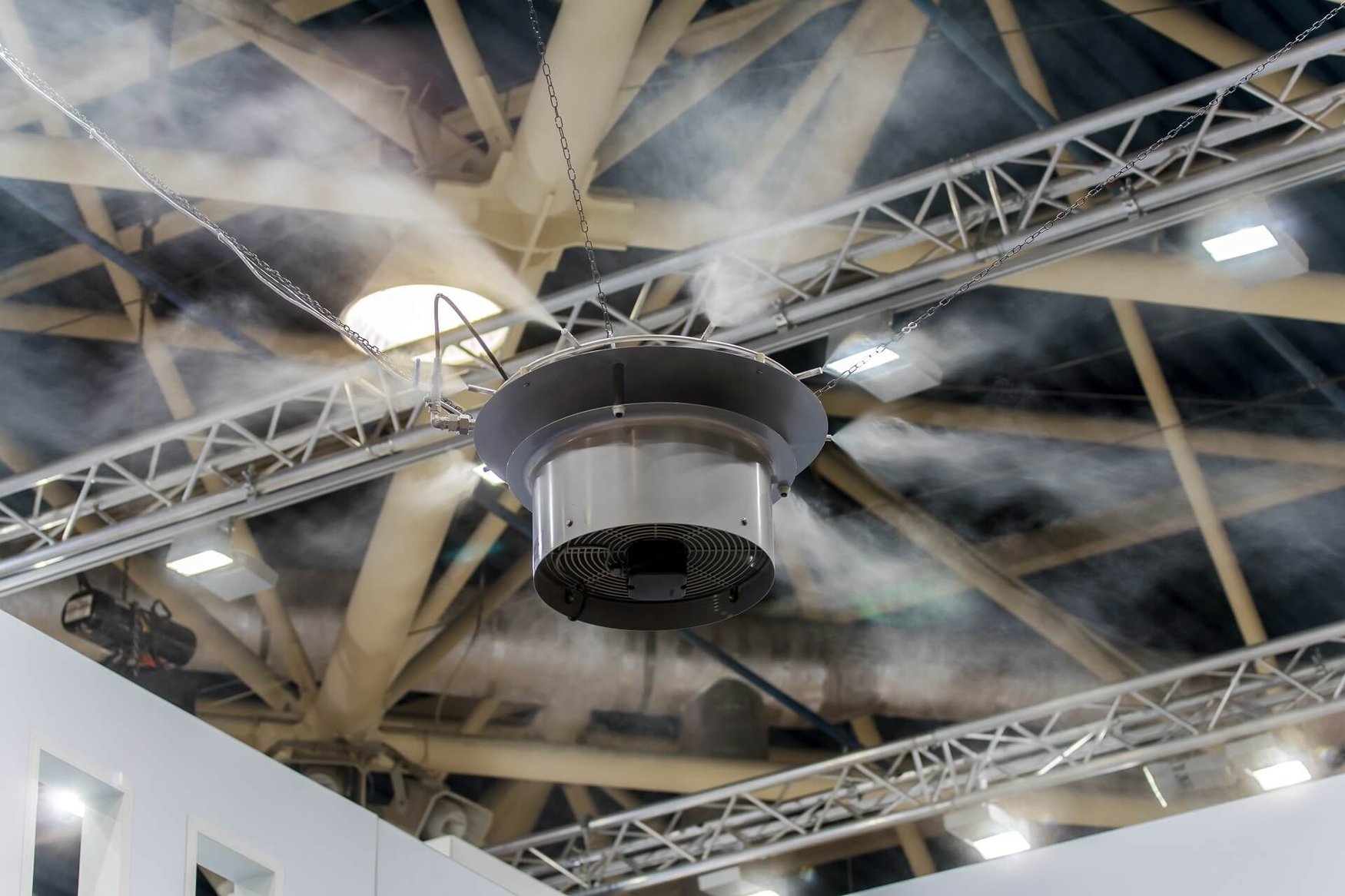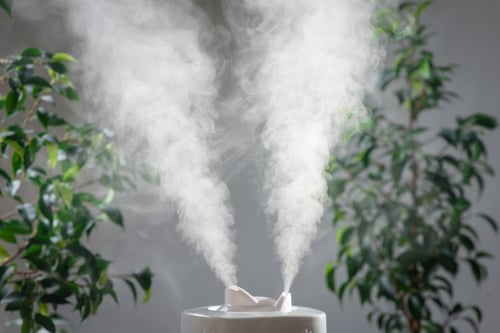Importance of Controlling Air Humidity in Buildings

Conventional HVAC design focuses on indoor temperature, but keeping humidity under control is also very important. Excessive moisture and dryness both have negative consequences, and the recommendation is keeping humidity within a moderate range. The US Environmental Protection Agency (EPA) and the American Society of Heating, Refrigerating and Air-Conditioning Engineers (ASHRAE) agree that the optimal range for indoor relative humidity is from 30% to 60%.
In many cases, heating and cooling systems can deliver adequate temperature and humidity simultaneously. However, when this is not possible, HVAC engineers specify humidification or dehumidification equipment as needed. Since these systems consume additional energy, the recommendation is to only purchase them after a professional assessment.
Make sure your building has optimal temperature and air humidity.
Problems Caused by Excessive Humidity
High humidity causes many issues that affect both buildings and their occupants. Humidity can damage some construction materials, while causing discomfort and health issues.
Depending on where it gathers, humidity can damage many materials. This often leads to expensive reparations, consuming funds that could be used on energy efficiency measures or other building upgrades. The following are some examples of humidity damage:
- Condensation on metallic surfaces causes rusting. Old plumbing systems made from cast iron are especially vulnerable to rust.
- Humidity can also accumulate in the spaces within walls. Wood and paint are especially vulnerable to damage from accumulated moisture.
Air conditioned spaces with excessive humidity often feel like a refrigerator, causing discomfort and health issues. This is a common issue with oversized air conditioning systems: they cool the air too fast, and humidity is not removed effectively.
Humidity also stimulates the growth of mold and dust mites, and both organisms cause respiratory irritation and allergies. In the case of asthma patients, exposure to mold spores or dust mites can also cause flare-ups. Unfortunately, mold and dust mites are very difficult to eliminate directly:
- Mold often grows hidden from sight, constantly spreading spores in building interiors.
- Dust mites are microscopic, and they survive feeding on organic matter such as dead skin shed by humans and pets.
Remove all the mold and dust mites in a building interior is unfeasible, and a much better approach is to lower air humidity. Both organisms die off when air humidity is reduced to the levels recommended by the US EPA and ASHRAE.
Problems Caused by Excessive Air Dryness
Excessive dryness also causes material damage, discomfort and health problems. Air moisture should be removed when necessary, but not to the point where relative humidity drops below the recommended range.
Wood tends to deform and crack when air humidity is too low, and paint may start falling off from surfaces. Low humidity also increases the chance of electrostatic discharges, which have the potential to damage electronic equipment. Data centers are especially vulnerable to electrostatic discharges, since they can damage expensive equipment and compromise important data.
Air dryness tends to irritate the skin, eyes and respiratory system. Small particles also stay airborne longer with low humidity, and this includes dust and viruses. As a consequence, allergies and viral illnesses are more common when relative humidity is low.
Keeping Relative Humidity Within the Optimal Range
As previously mentioned, humidification and dehumidification systems can keep air moisture at optimal levels. However, these devices have a price and an operating cost. The best approach is sizing HVAC equipment for optimal control of temperature and humidity, using additional measures only when necessary.

For example, if your building has humidity issues due to oversized air conditioners, adding dehumidification is not the most effective solution. Instead, you should consider upgrading the air conditioners, since you can get new units with an adequate capacity and a higher energy efficiency. On the other hand, a separate dehumidification system drives up energy expenses.
Some HVAC configurations have built-in dehumidification features, without requiring additional components. For example, dehumidification is possible when you have air handlers with both heating and cooling coils:
- The cooling coil reduces both air temperature and humidity. If additional dehumidification is needed, the cooling output is increased, in order to remove more air humidity.
- If this process cools the air excessively, the heating coil can be used to raise its temperature again.
Some steam-based heating systems allow simultaneous heating and humidification, which is very useful in cold and dry winter days. Although hot water is preferred over steam in space heating applications, your property can benefit from steam-based humidification if there is already a process using it - healthcare institutions and industrial facilities are two examples.
Energy-recovery ventilation systems typically exchange heat between the outdoor air supply and the exhaust. However, some configurations also allow humidity exchange, a concept called enthalpy-recovery ventilation:
- When the outdoor air is dry, ERV system can recover moisture from the exhaust air.
- On the other hand, when outdoor air is too humid, exhaust air can be used to remove some of the moisture.
- In other words, ERV can complement both humidification and dehumidification.
Conclusion
A well-designed HVAC system not only controls the indoor temperature, but also relative humidity. A moderate level of air moisture is recommended, since extreme humidity and dryness cause material damage and health issues.
To achieve the best results, get a professional opinion from HVAC engineers. They can deliver a high-performance mechanical design for new constructions, or suggest upgrades to improve performance in existing buildings. Adding humidification or dehumidification may seem like the simplest solution, but better results may be possible by improving the existing HVAC installation.

Keith Fink
Keith is the Franchise Brand Manager at NY Engineers, Keith is all things related to our project portfolio, brands and all things you need to know before we start your project.
Join 15,000+ Fellow Architects and Contractors
Get expert engineering tips straight to your inbox. Subscribe to the NY Engineers Blog below.


